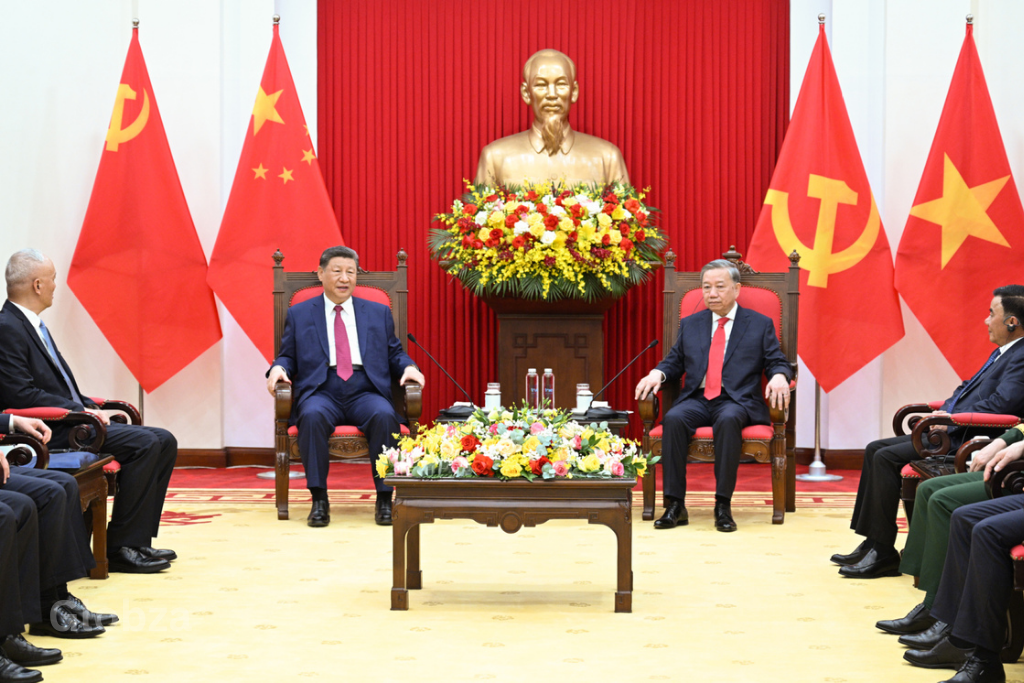Charm Offensive or Strategic Chess?

The Xi Jinping Southeast Asia visit has drawn global attention—not just for its optics, but for its power moves, diplomacy, and strategic positioning. As tensions between the U.S. and China escalate in the ongoing trade war, Xi’s stops in Vietnam, Malaysia, and Cambodia were far from routine.
Experts call this tour a calculated charm offensive. Xi aims to strengthen regional partnerships and counter growing American influence. The visit came as the U.S. tightens alliances through AUKUS and the Quad. In response, Xi is reasserting China’s presence across ASEAN.
From infrastructure promises to trade deals and soft-power messaging, Xi framed China as a stable, growth-focused ally—one offering support without the political strings often attached to Western aid.
Xi Jinping’s Visit to Hanoi: Symbolism and Strategic Messaging
Xi’s first stop was Hanoi—a visit full of symbolism. It came just as Vietnam narrowly avoided new U.S. tariffs. The timing wasn’t accidental. China is eager to pull Vietnam closer, especially as U.S. relations become more uncertain.
In public remarks, Xi called for unity against “unilateral bullying.” While he didn’t name names, it was a clear jab at the U.S. and its trade policies. His message? China is a reliable regional force, offering incentives, investment, and non-interference—while subtly warning against leaning too far toward Washington.
“It’s a very smart strategic move.” — Stephen Olson, former U.S. trade diplomat
What This Visit Signals:



“Unilateral Bullying” and the Free Trade Message

In a high-profile meeting with Vietnam’s Secretary-General To Lam, Xi doubled down. He repeated his stance against “unilateral bullying” and called for defending multilateral trade systems. Again, he didn’t name the U.S., but the message was clear.
This ties directly into China’s global narrative: champion of open markets, defender of economic order—while painting the U.S. as the unpredictable one. Hanoi, with strong ties to both powers, served as the ideal stage for this diplomatic messaging.
“The U.S. is acting like a reckless rogue nation.” — Stephen Olson
Xi’s Core Talking Points:



Trump Fires Back: “Trying to Screw the U.S.”

In Washington, former President Donald Trump responded with his signature bluntness. Speaking at a rally, he dismissed Xi’s diplomatic push—especially the Hanoi leg—as an attempt to “figure out how to screw the United States.”
His comments added fire to an already tense global backdrop. They also challenged President Biden’s leadership, questioning whether enough is being done to push back against China’s rise.
Meanwhile, the U.S.-China trade war is heating up. The U.S. recently imposed a 145% tariff on a wide range of Chinese goods. China responded quickly with 125% duties on American imports. The tit-for-tat is rippling through global supply chains.
Adding to the confusion, U.S. Customs initially exempted smartphones from the new tariffs. But in a surprising twist, Trump later contradicted that directive—leaving companies scrambling for clarity.
“That’s a beautiful meeting… how do we screw the U.S.A.?” — Donald Trump
Trade War Timeline:



Vietnam’s Balancing Act: Between Superpowers

Vietnam stands at the center of this great-power tug-of-war. As manufacturers move away from China, Vietnam has become a top destination. Its growing role in the global supply chain has attracted investment—and geopolitical attention.
The U.S. sees Vietnam as a vital Indo-Pacific partner. Yet, China remains its largest trading partner and powerful neighbor. This means Hanoi must navigate both relationships carefully, maximizing gains without taking sides.
Xi’s visit included symbolic gestures like a stop at the Ho Chi Minh Mausoleum. These moves signaled unity and shared ideology. But underneath the diplomatic pageantry, Vietnam remains wary.
Experts agree: while Vietnam may accept China’s offers, it won’t get too close. Issues like the South China Sea dispute, fear of economic overdependence, and the desire for sovereignty keep Hanoi cautious.
“The U.S. is as well vital a accomplice to put aside.” — Lowy Institute – Susannah Patton
Vietnam’s Strategic Balance:



The Xi Jinping Southeast Asia visit highlights China’s effort to increase its influence in the region, with a clear focus on reshaping economic and geopolitical relations with key ASEAN nations like Vietnam.
Conclusion: A Regional Power Shift in Motion
Xi Jinping’s Southeast Asia visit marks a critical moment in the region’s political recalibration. It’s more than symbolism—it’s a strategy to reshape the regional order, weaken U.S. leverage, and project China as a stabilizing anchor.
Analysts agree that the Xi Jinping Southeast Asia visit was designed to reshape regional alliances and influence ASEAN countries’ foreign policy choices.
For ASEAN countries, especially Vietnam, the challenge is clear: how to balance economic opportunity with strategic autonomy in a rapidly changing world.



